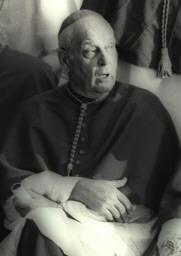The Vatican has lashed out at allegations that a former head of the Vatican bank may have been involved with the kidnapping of a 15-year old girl 25 years ago.
The Vatican said the accusations were ''infamous and without foundation'' and made against someone ''who has been dead for some time and cannot defend themself''.
''We do not wish to interfere in any way with the efforts of the judiciary to ascertain facts and responsibilites.... but at the same time we cannot help but express our firm disapproval for the way certain information has been made public, in a manner more bent on sensationalism than ethical and professional sincerity''.
Emanuela Orlandi, the daughter of a Vatican employee, disappeared in May 1985 and has never been seen or heard of since.
It was initially thought that she was taken hostage in order to be exchanged with Ali' Agca, the Turkish terrorist who shot Pope John Paul II in 1981.
Recent testimony leaked to the press claimed that she was kidnapped by a renowned gangster acting on orders from Msgr. Paul Marcinkus, the then-head of the Istitito per le Opere Religiose - the Institute for Religious Works - also known as the Vatican bank.
The testimony reportedly came from Sabrina Minardi, the one-time wife of former soccer star Bruno Giordano who later became the girlfriend of Enrico De Pedis, a leader of the notorious Rome Magliana gang in the 1980s.
According to press reports, Minardi told investigators that De Pedis kidnapped Orlandi and later killed her, dumping her body in a cement mixer.
She said she thought De Pedis did it as a favor to Marcinkus, who was allegedly involved in laundering the Magliana gang's illegal earnings abroad and wanted to ''send a message high up''.
De Pedis was gunned down in broad daylight on a central Rome street in 1990. Msgr. Marcinkus had resigned his IOR position a year earlier and six months after De Pedis' death he returned to his native Chicago, in United States.
Msgr. Marcinkus later retired to Arizona, where he died in February 2006.
The Vatican official sparked controversy for his involvement with Roberto Calvi, the chairman of Milan's private Banco Ambrosiano who was dubbed ''God's banker''.
Calvi, a member of the secret P2 Masonic lodge of Lucio Gelli, was found hanged in London in June 1982, triggering the nation's biggest postwar banking scandal.
According to Magliana gang supergrass Antonio Mancini, De Pedis did kidnap Orlandi but to extort money from the Vatican to make up for the huge amount of cash it lost through Calvi.
Sicily's Cosa Nostra is also believed to have lost a lot of money through Calvi and some believe may have been behind his 'suicide'.
Investigators are believed to be somewhat sceptical of Minardi's testimony because she also reportedly claims that Orlandi was thrown into the cement mixer along with the 11-year-old son of another Magliana gang member who disappeared in 1993, three years after De Pedis was killed and ten years after Orlandi was kidnapped.
Orlandi's family has also expressed its doubts on the validity of Minardi's testimony.
The appearance of her testimony in the press prompted an investigation by police who searched the offices of the AGI Italian news agency, which may be accused of violating court secrecy.
Despite his criminal record, De Pedis was buried in a crypt in the Church of St Apollinaire, near the central Piazza Navona, next to members of the clergy and the nobility.
The interment was said to have been authorised by the late Cardinal Ugo Poletti, who at the time was Vicar of Rome, in recognition of the ''offerings'' De Pedis had made.
According to fellow gang member Mancini, De Pedis ''was very religious, he killed people but he was a religious person''.









